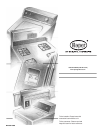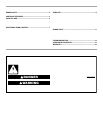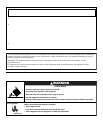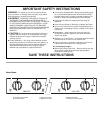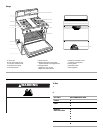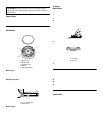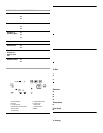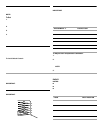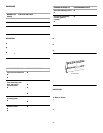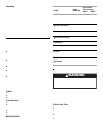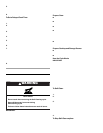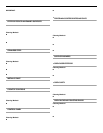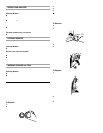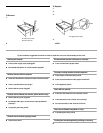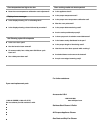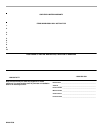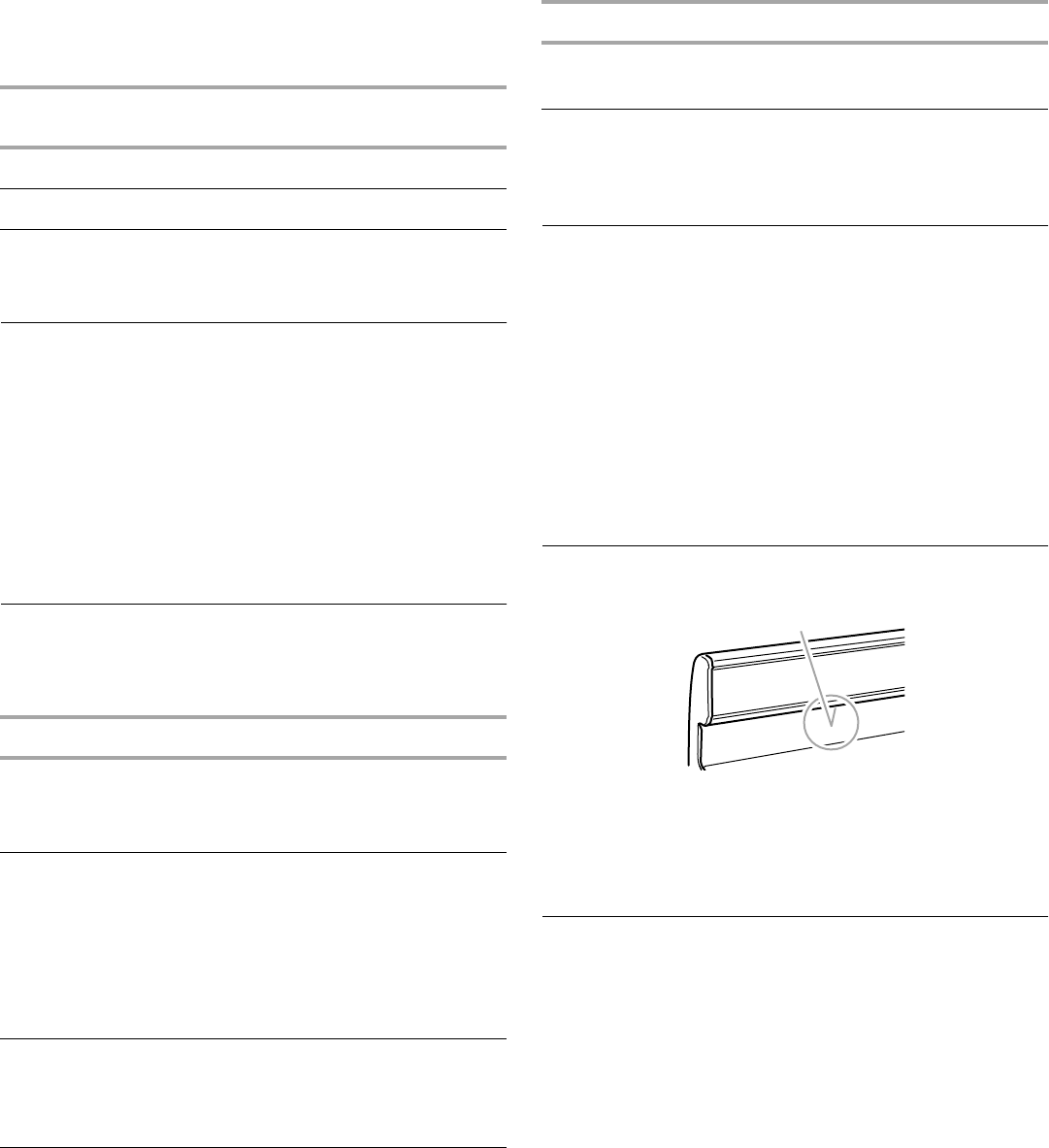
9
BAKEWARE
To cook food evenly, hot air must be able to circulate. Allow
2" (5 cm) of space around bakeware and oven walls. Use the
following chart as a guide.
AluminumFoil
IMPORTANT: Do not line the oven bottom with any type of foil,
liners or cookware because permanent damage will occur to the
oven bottom finish.
■ On those models with bottom vents, do not block or cover
the oven bottom vents.
■ Do not cover entire rack with foil because air must be able to
move freely for best cooking results.
■ To catch spills, place foil on rack below dish. Make sure foil is
at least ¹⁄₂" (1.3 cm) larger than the dish and that it is turned
up at the edges.
Bakeware
The bakeware material affects cooking results. Follow
manufacturer’s recommendations and use the bakeware size
recommended in the recipe. Use the following chart as a guide.
MeatThermometer
On models without a temperature probe, use a meat
thermometer to determine doneness of meat, poultry and fish.
The internal temperature, not appearance, should be used to
determine doneness. A meat thermometer is not supplied with
this appliance.
■ Insert the thermometer into the center of the thickest portion
of the meat or inner thigh or breast of poultry. The tip of the
thermometer should not touch fat, bone or gristle.
■ After reading the thermometer once, push it into the meat
½" (1.3 cm) more and read again. If the temperature drops,
cook the meat or poultry longer.
■ Check all meat, poultry and fish in 2 or 3 different places.
Oven Vent
A. Oven vent
The oven vent releases hot air and moisture from the oven, and
should not be blocked or covered. Blocking or covering the oven
vent will cause poor air circulation, affecting cooking and
cleaning results. Do not set plastics, paper or other items that
could melt or burn near the oven vent.
Baking andRoasting
IMPORTANT: Do not place food or cookware directly on the oven
door or the oven bottom.
Before baking and roasting, position racks according to the
“Positioning Racks and Bakeware” section.
To Bake or Roast:
1. Touch BAKE.
Touch TEMP “up” or “down” arrow pads to set a temperature
other than 350°F (177°C) in 5°F (3°C) amounts. The bake
range can be set between 170°F and 500°F (77°C and
260°C).
2. Touch START/ENTER.
The temperature can be changed at any time after this step
by touching the TEMP/TIME “up” or “down” arrow pads.
START/ENTER does not need to be touched again. If baking/
roasting while the Timer is counting down, the set baking/
roasting temperature can be displayed for 5 seconds by
touching BAKE.
3. Touch OFF/CANCEL when finished.
NUMBER OF
PAN(S)
POSITION ON RACK
1 Center of rack.
2 Side by side or slightly staggered.
3 or 4 Opposite corners on each rack. Make sure
that no bakeware piece is directly over
another.
BAKEWARE/RESULTS RECOMMENDATIONS
Light colored aluminum
■ Light golden crusts
■ Even browning
■ Use temperature and time
recommended in recipe.
Dark aluminum and
other bakeware with
dark, dull and/or
nonstick finish
■ Brown, crisp crusts
■ May need to reduce baking
temperatures 25°F (15°C).
■ Use suggested baking time.
■ For pies, breads and
casseroles, use temperature
recommended in recipe.
■ Place rack in center of oven.
Insulated cookie sheets
or baking pans
■ Little or no bottom
browning
■ Place in the bottom third of
oven.
■ May need to increase
baking time.
Stainless steel
■ Light, golden crusts
■ Uneven browning
■ May need to increase
baking time.
Stoneware/Baking stone
■ Crisp crusts
■ Follow manufacturer’s
instructions.
Ovenproof glassware,
ceramic glass or
ceramic
■ Brown, crisp crusts
■ May need to reduce baking
temperatures 25°F (15°C).
BAKEWARE/RESULTS RECOMMENDATIONS
A



